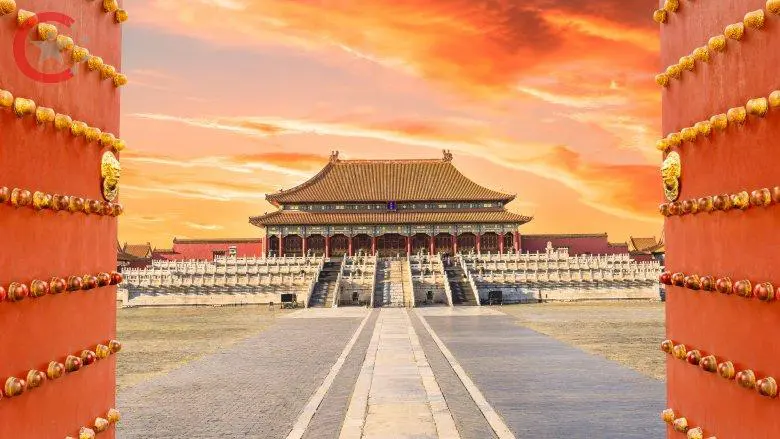The Forbidden City of China was a place for the emperors of China (from Ming Dynasty to the end of Qing Dynasty).
It was built in the early 15th century between 1406 to 1420 AD. And the city remained until the last emperor to rule China, Emperor Puyi in 1912, but today, it is one of the most visited touristic places in China.
Where is the Forbidden City of China
The Forbidden City is located in Dongcheng, in the center of Beijing, the capital of the People’s Republic of China.
It is one of the most popular tourist attractions in Beijing, with an increasing number of tourists. As it went from 14 million in 2012 to 19 million in 2019.

The complex of the region includes (980) buildings and (8886) rooms. Also, it was said that it had (9999) rooms. Additionally, the whole area of the complex is 720,000 square meters (72 hectares)/178 acres.
The Forbidden City is rectangular and it measures 961 meters (3,153 feet) from north to south and 753 meters (2,470 feet) from east to west.
In 1961, the Forbidden City was listed by UNESCO as the largest collection of preserved ancient wooden structures in the world. And in 1987, it was considered a World Heritage Site.
The palace of the Forbidden City is so special because of its amazing traditional Chinese architecture, which had a great impact on cultural and architectural developments in East Asia.
Why Is It Called the Forbidden City
The reason of naming it (the Forbidden City) is the Chinese name (Zijin Cheng), which means “purple Forbidden City” and it also has an English name “Forbidden Palace”.
Actually, the name (Zijin Cheng) first appeared in 1576, and in both the Ming and Qing dynasties the city was known as the “Palace City”.
But today, the palace in Chinese is called Gùgōng, which means “the previous palace,” and its museum is called in Chinese (Gùgōng Bówùyùan), which means “Palace Museum.”
History of the Forbidden City of China
When Emperor Chongwu Zhou Dio’s son became the Yongle emperor, he moved the ruling capital from Nanjing to Beijing. And in 1406 the Forbidden City was established.
The construction of the city lasted 14 years and more than a million workers worked on it.
They used many materials including tree trunks of precious wood, with large blocks of marble. And the main halls of the building were paved with “golden bricks” specially made in Suzhou.
READ ALSO: The Chinese Dam That Slowed the Earth
In 1912, after Emperor Puyi (the last emperor of China) abdicated, the Forbidden City was no longer the political center of China. After being a home to 24 emperors, including 14 of the Ming Dynasty and (10) of the Qing Dynasty.
In 1925 the Palace Museum was opened in the Forbidden City.
The most important places in the City
Forbidden city is a large complex, surrounded by many gardens, temples and parks that are special for their vast areas, including:
- Zhongshan Park which covers an area of 22 hectares (54 acres).
- Imperial Ancestral Temple.
- Beihai Park which covers an area of 69 hectares (171 acres)
- Jingshan Park which covers an area of 23 hectares (57 acres).
The Palace Museum also contains more than 340,000 pieces of ceramics and porcelain. In addition to the imperial collections of the Tang and Song dynasties.
READ ALSO: The best Chinese drama

For more information about tourist sites and cities in China, we invite you to browse the (Tourism in China) section.


